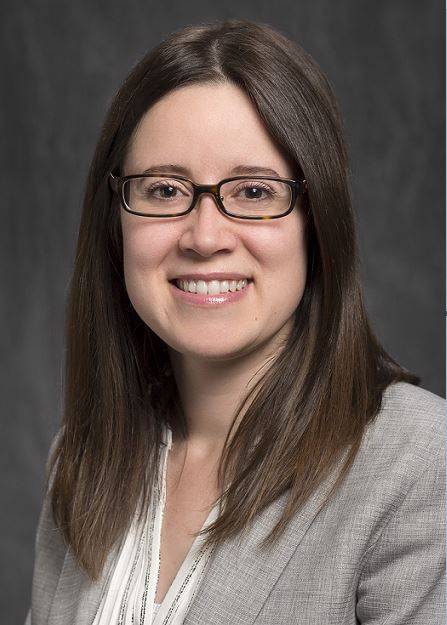Palardy Receives NSF CAREER Award
Project to Address Challenges of Ultrasonic Processing for Manufacturing
January 13, 2021
 BATON ROUGE, LA – LSU Assistant Professor of Mechanical Engineering Genevieve Palardy
recently received a National Science Foundation CAREER Award for her project, “Understanding
Ultrasonic Processing of Layered Polymer Composites Across Length Scales.”
BATON ROUGE, LA – LSU Assistant Professor of Mechanical Engineering Genevieve Palardy
recently received a National Science Foundation CAREER Award for her project, “Understanding
Ultrasonic Processing of Layered Polymer Composites Across Length Scales.”
It is a five-year, $585,950 award.
Palardy’s project is aimed at helping bring a new approach to manufacturing, specifically through the use of polymer composite materials and ultrasonic processing. Her research seeks to further the development of ultrasonic processing of composites and advance the growth of several applications in the aerospace, transportation, maritime, piping, and wind energy industries.
“One specific application I’m researching is called ultrasonic welding, not only for joining, but for consolidation and repair of composites as well,” Palardy said. “The ultrasonic vibrations work in a way similar to rubbing your hands quickly to warm up in winter. For example, if you want to join two parts together, you can stack them on top of each other, place a thermoplastic film between them, and apply ultrasonic vibrations perpendicularly to the material stack.
“This friction locally increases the temperature between the parts to be joined in a matter of milliseconds, and the polymer melts, then solidifies to create a bond. Other processing methods for polymer composites have longer duration, from minutes to hours, so that is one way ultrasonic processing is advantageous.”
Current manufacturing techniques typically require high temperatures and expensive tooling, which limits the use of composite materials—which possess high strength and low weight as compared to conventional materials like metals—as primary structural components in a wide variety of industries. Processing through ultrasonic vibrations provides a promising candidate for an energy- and cost-efficient manufacturing and assembly technique.
However, there are outstanding challenges to utilizing this method.
“One challenge is related to the use of the tool that applies ultrasonic vibrations; mostly, because it ‘hides’ the material and the interface,” Palardy said. “It’s difficult to visualize what is actually happening under the tool. A second challenge lies in the ultrasonic vibrations themselves, as they may create issues taking accurate measurements under the tool. For example, they can affect sensors that need to be in contact with the interface. Finally, another challenge is the fact that this is an ultra-fast process; everything happens within milliseconds, which makes it difficult to capture the detailed material behavior during the process.”
In order to solve these challenges, Palardy wants to use her project to understand how ultrasonic material parameters govern heat generation and crystallization mechanisms through multiscale—from molecular structure to macro-scale—experiments. She also wants to establish a model based on experimental outcomes that will allow for predicting bond efficiency and scaling up the process.
“There is no commercial software or clear framework to carry out simulations,” Palardy said. “Ultrasonic processing is deceptively complex, as it is a multiphysics problem—polymer science, solid mechanics, thermodynamics, and fluid mechanics. Simulations will allow us to carry out the entire process virtually, including ultrasonic parameters, material properties, and part geometry. I think it will be very challenging to accomplish, but if successful, it will lead to significant contributions in the field.”
In addition to the research component of this project is the outreach aspect. Palardy will engage area elementary, middle, and high school students—particularly female students—in STEM activities to promote tools for them to pursue rewarding engineering careers.
She will also participate in ENGage LSU; host hands-on activities with the Louisiana Art & Science Museum; organize workshops with local high schools for composites manufacturing and joining; sponsor a Capstone Design project for a team of LSU undergraduate students to develop an application with augmented reality to teach and train a variety of audiences; and develop a new project-based course titled, “Design With Composite Materials,” which will include hands-on manufacturing and simulation analyses for undergraduate and graduate students.
Like us on Facebook (@lsuengineering) or follow us on Twitter and Instagram (@lsuengineering).
###
Contact: Joshua Duplechain
Director of Communications